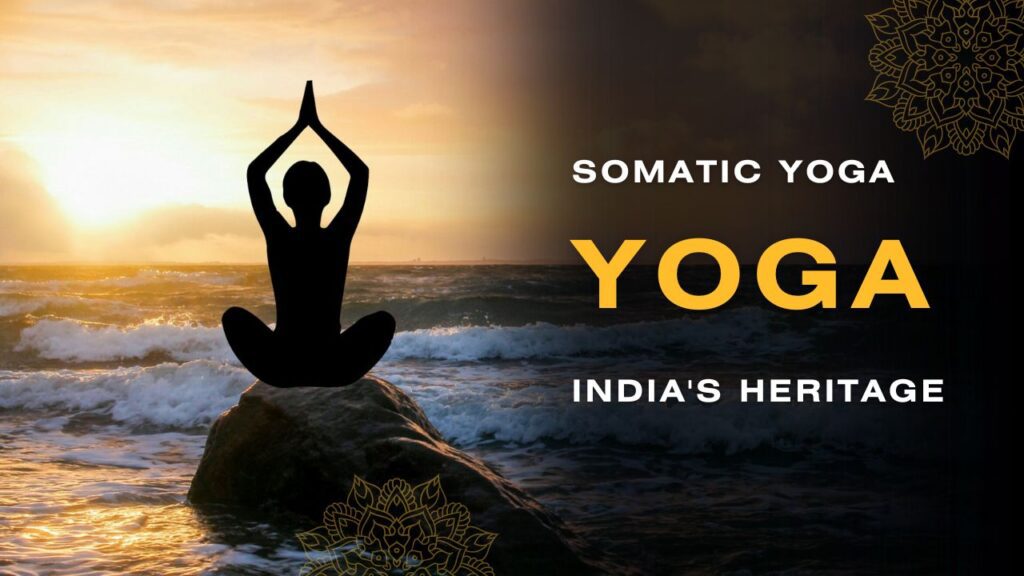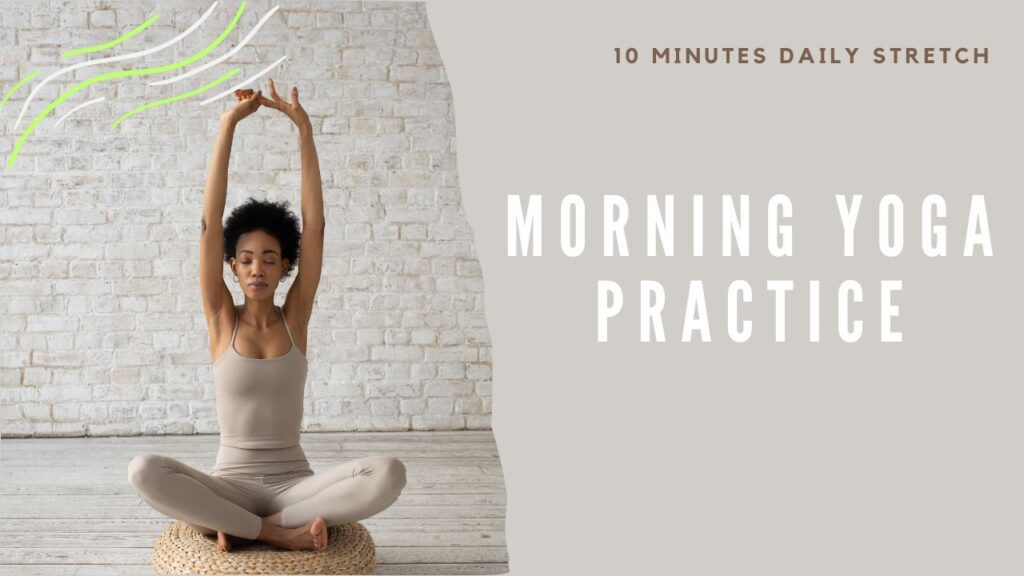Exploring Somatic Yoga

In today’s fast-paced world, where physical and mental well-being often take a back seat to daily responsibilities, people are increasingly seeking holistic approaches to wellness. Somatic yoga, a practice that focuses on mindful movement, body awareness, and the connection between the mind and body, is gaining recognition as an effective way to promote overall health. This article delves into the benefits of yoga, exploring its various facets under eight subheadings to give you a comprehensive understanding of how it can transform your physical, mental, and emotional health.
1. Understanding Somatic Yoga: A Holistic Approach to Healing
Somatic yoga is more than just a traditional yoga practice—it’s a blend of mindful movement, breath awareness, and body sensation exploration. Rooted in somatics, which refers to the body’s internal perception and experience, This yoga focuses on how we inhabit our bodies and how we feel from the inside out. This practice was developed to bring greater awareness to habitual patterns of tension, stress, and misalignment in the body. By learning to sense and move with greater awareness, we can release these tensions and create a more harmonious connection between the mind and body.
Unlike other forms of yoga, which emphasize achieving specific poses or physical goals, this yoga focuses on the internal experience of movement. It’s about understanding how your body moves, where tension resides, and how to release that tension. This makes this yoga accessible to everyone, regardless of fitness level, flexibility, or age. The goal is to restore natural movement and promote overall healing through slow, mindful movements.
Key Concepts of Somatic Yoga
- Body Awareness: Paying attention to how your body feels in each moment.
- Mindful Movement: Moving slowly and intentionally to sense how your body responds.
- Tension Release: Recognizing areas of tension and consciously letting them go.
- Healing Focus: Encouraging self-healing through internal awareness and gentle movements.
2. How Somatic Yoga Enhances Body Awareness

One of the primary benefits of this yoga is the enhancement of body awareness. In our modern lives, we often go through the day on autopilot, barely noticing the signals our body sends us—whether it’s tension in the shoulders, tightness in the hips, or shallow breathing. This yoga teaches us to slow down, listen, and respond to these signals before they develop into chronic pain or injury.
By practicing somatic yoga, you develop a heightened sense of how your body feels in space. Each movement is done with full attention, allowing you to explore the sensations that arise in different parts of the body. This awareness is a powerful tool for improving posture, alleviating pain, and preventing injuries. For example, if you notice that you’re holding tension in your neck during a particular movement, you can adjust your posture to release that tension and move more efficiently.
Over time, this enhanced body awareness can carry over into daily life. You’ll become more attuned to how you sit, stand, and move throughout the day, leading to a more mindful and balanced way of living.
Benefits of Improved Body Awareness:
- Better Posture: Increased awareness of alignment and movement patterns.
- Reduced Pain: Early detection and release of tension before it becomes chronic.
- Improved Coordination: More fluid and graceful movements.
- Injury Prevention: Understanding how to move efficiently to avoid strain.
3. The Connection Between Mind and Body in Somatic Yoga
Somatic yoga isn’t just about physical movement—it’s about cultivating a deep connection between the mind and body. When we move mindfully and pay attention to the sensations in our bodies, we engage the nervous system in a way that promotes relaxation and healing. This mind-body connection is at the heart of this yoga, helping to integrate physical, mental, and emotional well-being.
Stress, anxiety, and trauma are often stored in the body as physical tension. This yoga provides a safe space to explore these emotions and release them through gentle movement. By focusing on the body’s sensations, we can access deep layers of emotional and psychological tension, allowing for healing on multiple levels.
Additionally, somatic yoga promotes the development of a non-judgmental awareness of the self. Instead of pushing your body to achieve a particular pose or goal, you learn to accept your body as it is in each moment. This compassionate approach fosters a sense of self-acceptance and inner peace.
Benefits of the Mind-Body Connection:
- Stress Relief: Releasing tension stored in the body.
- Emotional Healing: Addressing unresolved emotions through body awareness.
- Improved Mental Clarity: Fostering a calm and focused mind.
- Increased Self-Compassion: Cultivating a non-judgmental relationship with the body.
4. Somatic Yoga for Stress Relief and Relaxation
In today’s hectic world, stress has become a constant companion for many. Whether it’s work-related pressures, family responsibilities, or societal demands, chronic stress can take a toll on both the body and mind. One of the most profound benefits of somatic yoga is its ability to relieve stress and promote deep relaxation.
Somatic yoga’s slow, mindful movements encourage the body to shift from the fight-or-flight mode (sympathetic nervous system) to the rest-and-digest mode (parasympathetic nervous system). This shift allows the body to relax, reducing the production of stress hormones such as cortisol and promoting a sense of calm.
In addition, somatic yoga emphasizes deep, diaphragmatic breathing, which is a powerful tool for calming the nervous system. When we breathe deeply and slowly, we signal to the brain that we are safe, which in turn helps to relax the muscles and release tension. Regular practice of somatic yoga can help to reset the body’s stress response, making it easier to cope with everyday challenges.
Techniques for Stress Relief in Somatic Yoga:
- Gentle Movements: Slow, flowing movements that release tension from the body.
- Mindful Breathing: Deep, conscious breathing to activate the parasympathetic nervous system.
- Body Scanning: Bringing awareness to different parts of the body to identify and release tension.
- Guided Relaxation: Ending each practice with a guided relaxation to promote a deep sense of calm.
5. Improving Flexibility and Mobility Through Somatic Movement
While traditional yoga is often associated with increased flexibility, somatic yoga takes a different approach to improving mobility. Instead of stretching the muscles to their limit, somatic yoga focuses on releasing chronic tension patterns that restrict movement. By doing so, the body can regain its natural flexibility and range of motion without the risk of overstretching or injury.
Somatic yoga uses small, gentle movements that engage the brain and nervous system in a process called “pandiculation.” This technique involves contracting a muscle, slowly releasing it, and then fully relaxing it. Pandiculation helps to reset the muscle’s resting length, making it easier to move without restriction.
For those who struggle with tightness or limited mobility, somatic yoga offers a safe and effective way to increase flexibility without the need for intense stretching. It’s particularly beneficial for individuals recovering from injuries, older adults, or anyone with joint or muscle stiffness.
Benefits of Improved Flexibility and Mobility:
- Reduced Stiffness: Releasing chronic tension patterns that limit movement.
- Enhanced Range of Motion: Regaining natural flexibility through mindful movement.
- Injury Prevention: Avoiding overstretching or straining the muscles.
- Better Functional Movement: Improving everyday activities such as walking, bending, and reaching.
6. Integrating Somatic Yoga into Your Daily Wellness Routine
One of the best things about somatic yoga is that it can be easily integrated into your daily routine. Because the movements are gentle and accessible, you don’t need to set aside large blocks of time to practice. In fact, even just a few minutes of somatic yoga each day can make a significant difference in how you feel.
You can incorporate somatic yoga into your morning routine to start the day with a sense of calm and focus. Alternatively, you can use it as a way to unwind before bed, helping to release the tension that accumulates throughout the day. Many people find that practicing somatic yoga in the evening helps them sleep better and wake up feeling more refreshed.
Additionally, somatic yoga can be used as a complement to other forms of exercise, such as strength training or cardiovascular workouts. By incorporating somatic yoga into your fitness routine, you can improve your body awareness, reduce the risk of injury, and enhance your overall performance.
Tips for Incorporating Somatic Yoga:
- Start Small: Begin with just 10–15 minutes of practice each day.
- Focus on Breath: Use deep breathing to enhance the effects of the movements.
- Be Consistent: Regular practice is key to experiencing the full benefits.
- Listen to Your Body: Move in a way that feels comfortable and avoid pushing yourself too hard.
7. Somatic Yoga for Beginners: A Step-by-Step Guide
If you’re new to somatic yoga, it’s important to start slowly and give yourself time to learn the fundamentals. The beauty of somatic yoga is that it doesn’t require any prior experience or special equipment, making it accessible to everyone. All you need is a quiet space, a comfortable mat, and a willingness to explore your body’s sensations.

Simple Somatic Yoga Routine for Beginners:
- Body Scan: Begin by lying on your back and doing a body scan. Close your eyes and bring awareness to each part of your body, noticing any areas of tension.
- Pelvic Tilts: Slowly tilt your pelvis up and down, paying attention to how your lower back feels as it presses into the mat and releases.
- Cat-Cow Movements: Come to all fours and move through gentle cat-cow stretches, focusing on the sensation of your spine moving through flexion and extension.
- Shoulder Rolls: Sit comfortably and roll your shoulders in slow circles, releasing any tension in the neck and upper back.
- Guided Relaxation: Finish your practice with a guided relaxation, allowing your body to fully relax and absorb the benefits of the movements.
As a beginner, it’s important to practice somatic yoga with patience and curiosity. There’s no need to rush or push yourself into advanced poses. Instead, focus on building a strong foundation of body awareness and mindful movement.
8. Somatic Yoga for Weight Loss: Boosting Metabolism and Body Confidence
While somatic yoga may not be the first type of yoga that comes to mind for weight loss, it can be a powerful tool for achieving and maintaining a healthy weight. Unlike high-intensity workouts, which can sometimes lead to burnout or injury, somatic yoga promotes sustainable weight loss by encouraging mindful movement, stress reduction, and improved metabolism.
Chronic stress is one of the leading contributors to weight gain, especially in the abdominal area. Somatic yoga helps to reduce stress by activating the parasympathetic nervous system, which in turn lowers cortisol levels and supports a healthy metabolism.
Additionally, somatic yoga encourages a deeper connection with your body, helping you develop a more positive body image and greater self-confidence. When you feel good in your body, you’re more likely to make healthy choices that support your long-term wellness goals.
How Somatic Yoga Supports Weight Loss:
- Stress Reduction: Lowering cortisol levels to prevent stress-related weight gain.
- Improved Metabolism: Encouraging movement and breathing patterns that support healthy digestion and metabolism.
- Mindful Eating: Developing a greater awareness of your body’s hunger and fullness cues.
- Body Confidence: Cultivating a positive relationship with your body, which leads to healthier lifestyle choices.
conclusion
somatic is a gentle, yet powerful practice that offers a wide range of benefits for physical, mental, and emotional well-being. Whether you’re looking to reduce stress, improve flexibility, enhance body awareness, or support weight loss, somatic yoga can help you achieve your goals in a mindful and sustainable way. By incorporating somatic yoga into your daily routine, you’ll not only feel better in your body but also cultivate a deeper sense of inner peace and self-compassion.
